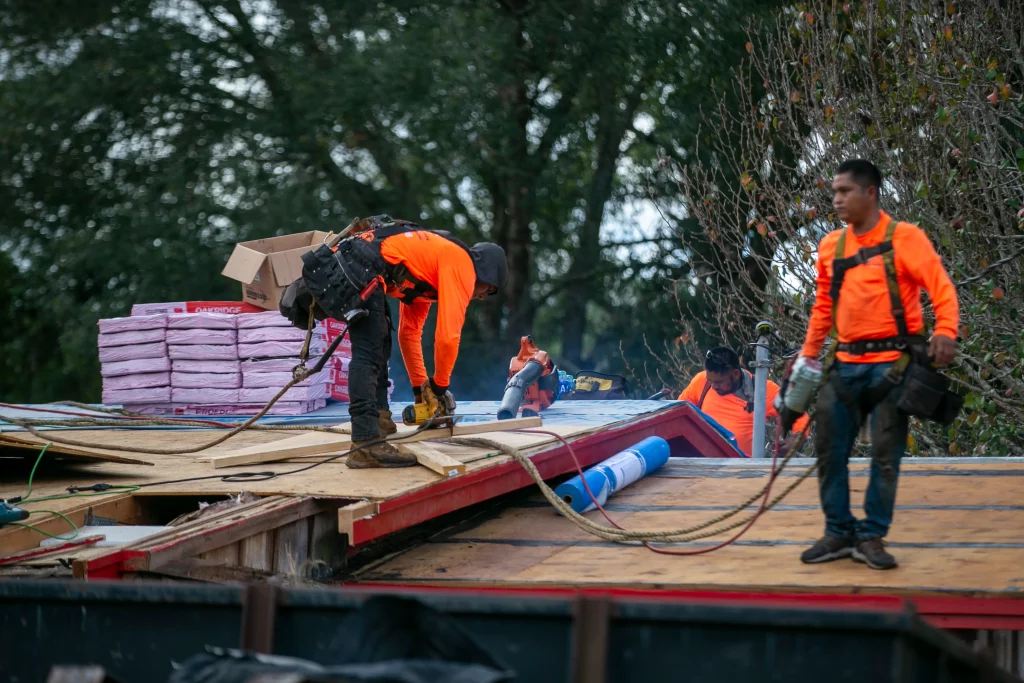When it comes to replacing your roof, it’s a significant investment in your home’s maintenance and longevity. However, understanding the financial aspects of roof replacement can be a bit daunting, especially when it comes to deductibles. In this article, we’ll explore the question: “Do you have to pay a deductible for roof replacement?” and shed light on the complexities of this important topic.

What Is a Deductible?
Before we delve into the specifics of roof replacement deductibles, let’s clarify what a deductible is. A deductible is the amount you’re responsible for paying before your insurance coverage kicks in. For many types of insurance, including homeowners insurance, deductibles are a common feature.
Homeowners Insurance and Roof Replacement
Your homeowners insurance policy typically covers damage to your home’s structure, including the roof, caused by certain perils, such as storms, hail, and fire. When you need a roof replacement due to a covered peril, your insurance company will usually assist with the costs. However, they will expect you to contribute the deductible amount towards the overall expenses.
Determining the Deductible
The deductible amount is determined when you purchase your homeowners insurance policy. Typically, you can choose the deductible amount based on what you’re comfortable paying out of pocket in the event of a claim. Common deductible amounts range from $500 to $2,500, but this can vary depending on your policy and location.
Roof Replacement Scenarios
Now, let’s explore different scenarios related to roof replacement and how deductibles come into play:
- Storm Damage: If your roof sustains damage from a storm (e.g., heavy winds or hail) that is covered by your insurance policy, you’ll need to pay the deductible amount before your insurance company covers the rest of the costs. For example, if the total cost of roof replacement is $10,000 and your deductible is $1,000, you would pay the $1,000, and your insurer would cover the remaining $9,000.
- Regular Wear and Tear: In cases where your roof needs replacement due to normal wear and tear, age, or lack of maintenance, it’s unlikely that your homeowners insurance will cover the cost. In these situations, you’d be responsible for the entire expense, including the full cost of the replacement and not just the deductible.
- Combining Repairs: Sometimes, homeowners need both repairs and a partial roof replacement. If the repair costs are less than the deductible, you might not make an insurance claim, and the deductible wouldn’t apply. In this case, you would be responsible for the repair costs out of pocket.
Navigating the Claims Process
When you believe that your roof has sustained damage that is covered by your homeowners insurance, follow these steps:
- Document the Damage: Take photos and gather evidence of the damage to your roof. This documentation will be essential when filing a claim.
- Contact Your Insurance Company: Reach out to your insurance company as soon as possible to report the damage. They will guide you through the claims process and may schedule an inspection of the damage.
- Obtain Repair or Replacement Estimates: Get estimates from reputable roofing contractors to provide to your insurance adjuster. These estimates will help determine the extent of the damage and the cost of repairs or replacement.
- Pay Your Deductible: If the claim is approved, you’ll need to pay your deductible. This can be done directly to the contractor performing the work or as per your insurer’s instructions.
- Complete the Roof Replacement: Once your deductible is paid, and the claim is approved, the roof replacement process can begin.
The Bottom Line
So, do you have to pay a deductible for roof replacement? The answer is yes, but it largely depends on the cause of the roof damage and the terms of your homeowners insurance policy. In cases of covered perils, you will be responsible for the deductible amount, and your insurance company will cover the remaining costs. However, for general wear and tear or maintenance-related issues, you will need to bear the full cost of roof replacement.
It’s essential to understand your insurance policy and its terms to make informed decisions about roof replacement and any potential costs you may incur. Proper documentation and timely communication with your insurance company are key to a smooth claims process. Always consult with your insurance agent and a reputable roofing professional to ensure you’re making the right choices when it comes to maintaining and replacing your roof.



Leave a Reply